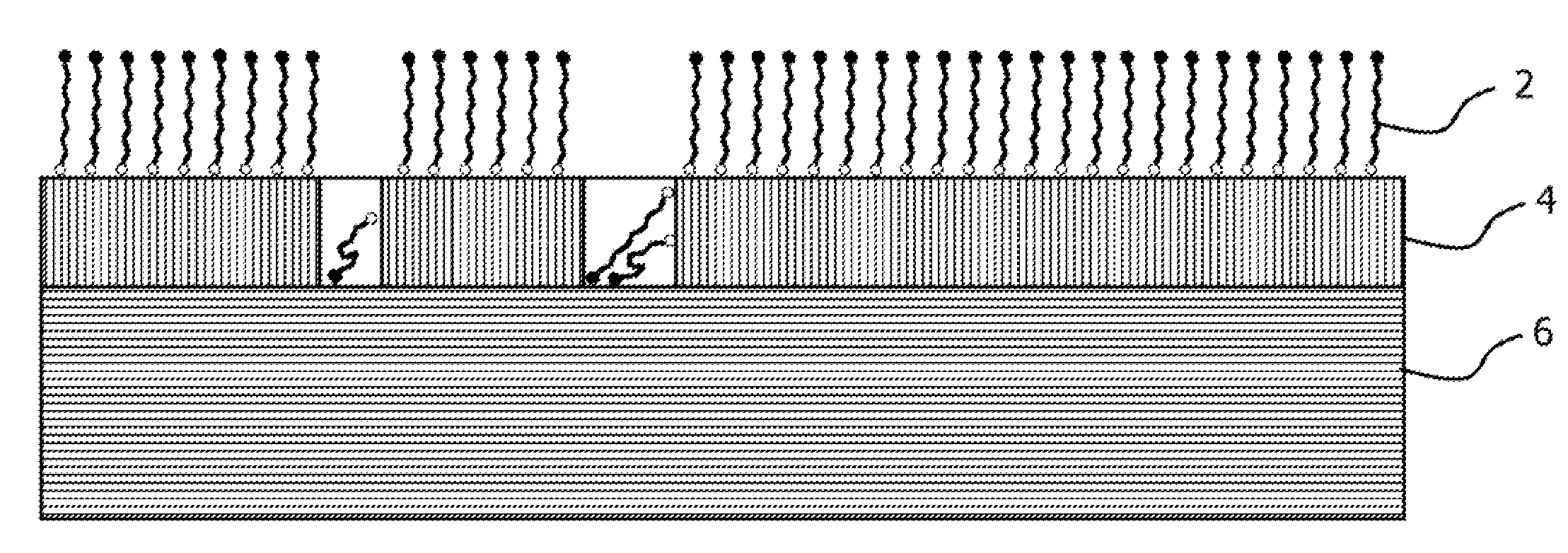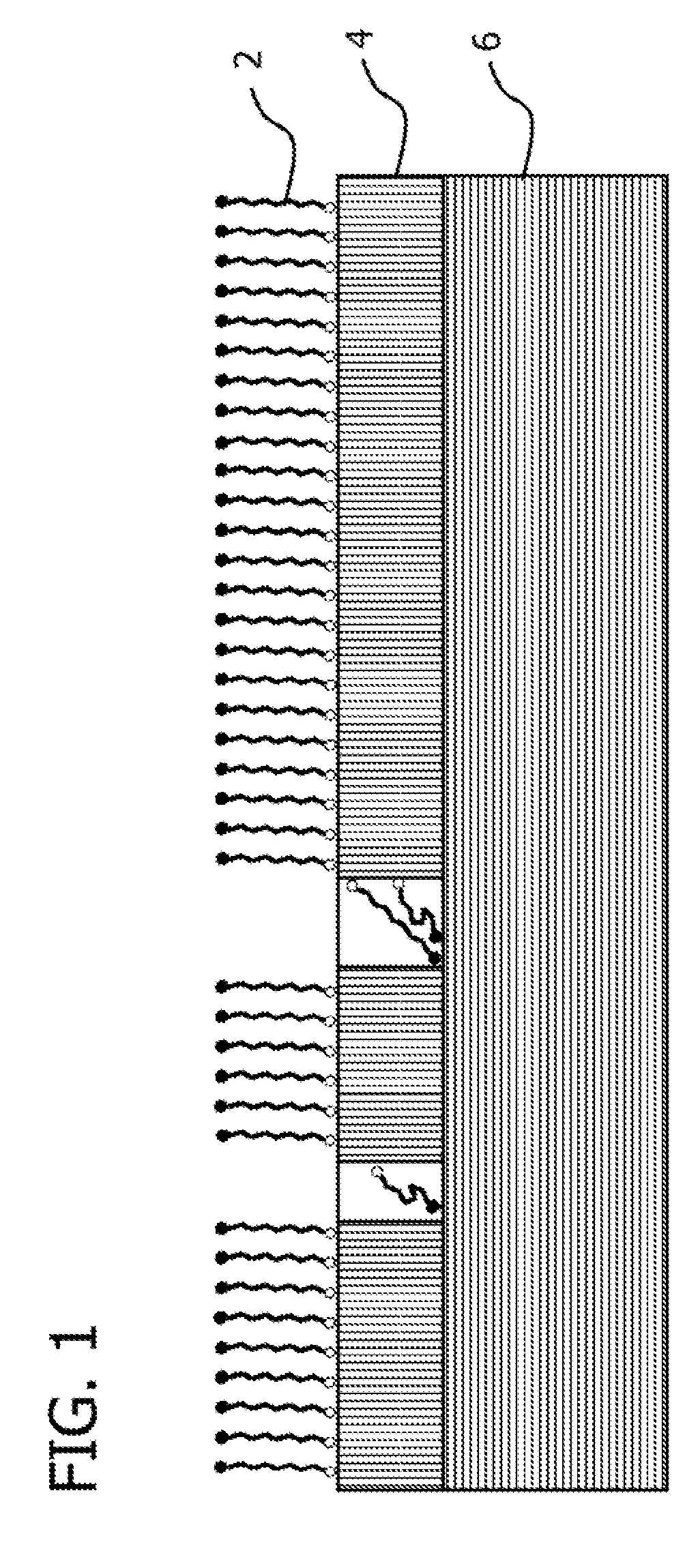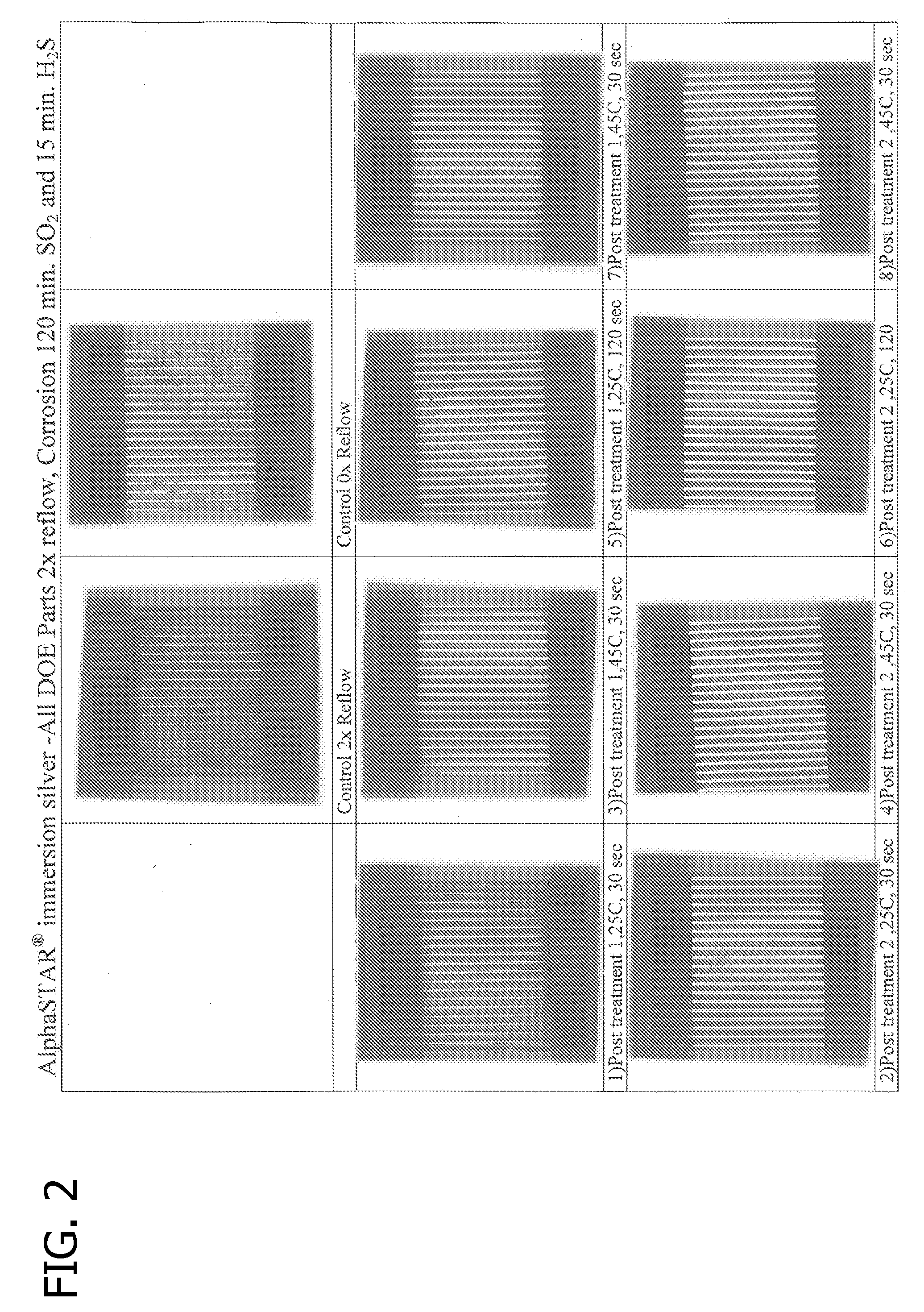Self assembled molecules on immersion silver coatings
a technology of silver coatings and molecules, applied in coatings, transportation and packaging, other chemical processes, etc., can solve the problems of slow process, difficult control, and insufficient protection of copper circuitry from oxidation, and achieve the effect of enhancing corrosion resistan
- Summary
- Abstract
- Description
- Claims
- Application Information
AI Technical Summary
Benefits of technology
Problems solved by technology
Method used
Image
Examples
example 1
Anti-Corrosion Composition
[0082]An anti-corrosion composition (approximately 1 Liter) was prepared having the following components:[0083]1. 2-mercaptobenzimidazole (0.1 grams, 98% solution, available from Sigma-Aldrich, Saint Louis, Mo.)[0084]2. 3,3-dichlorobenzyl benzimidazole (0.1 gram)[0085]3. n-octyl thiol (0.5 grams)[0086]4. Tetrahydrofurfuryl alcohol (390 grams, available from Sigma-Aldrich, Saint Louis, Mo.)[0087]5. Zinc bromide (0.1 g)[0088]6. Pluronic P-65 (2.0 grams, available from BASF)[0089]7. Potassium hydroxide (2.24 grams of a 50% solution)[0090]8. Water to 1 L (approximately 600 mL).
[0091]The composition was prepared by mixing the components together and letting the composition rest for about two hours.
example 2
Thermal Stability of 2-Mercaptobenzimidazole
[0092]The active compound, 2-mercaptobenzimidazole was subjected to thermal stability analysis by Differential Scanning Calorimetry (DSC) and Thermogravimetric Analysis (TGA).
[0093]DSC showed that 2-mercaptobenzimidazole has a melting point at approximately 312° C. DSC testing showed that 2-mercaptobenzimidazole may potentially withstand lead-free reflow, which reaches temperatures as high as 270° C., typically 262° C.
[0094]The second sample was subjected to thermogravimetric analysis. Table 2 shows the decomposition progress of the 2-mercaptobenzimidazole as determined by TGA.
TABLE 2Thermogravimetric AnalysisPercentDecompositionTemperature1%221.74° C.2%233.75° C.5%254.41° C.10%274.14° C.25%302.42° C.50%324.83° C.75%342.19° C.
[0095]As is apparent from Table 2, 2-mercaptobenzimidazole is stable at temperatures commonly achieved for Pb-free reflow processes, with significant decomposition occurring only at temperatures exceeding 300° C.
example 4
Corrosion Testing of Panels
[0096]Ten copper panels were coated with a layer of immersion-plated silver using AlphaSTAR®, available from Enthone Inc. The thickness of the immersion-plated silver coating was approximately six microinch. The dimensions of the testing coupons were 2 inch×3 inch.
[0097]The copper panels were tested for corrosion resistance. Two copper panels, which served as the controls, were not treated with an anti-corrosion composition while eight panels were treated an anti-corrosion composition in a manner sufficient to deposit a protective organic film.
[0098]Four panels were treated using the following anti-corrosion composition, designated Treatment #1: 2-(3,4-dichlorobenzyl)-benzimidazole (3.0 g / L), 0.1 g of zinc bromide, 0.2 g of n-octyl thiol, 0.1 g of Pluronic P-65, 2-ethoxyethanol (500 mL / L) and KOH (1.12 g / L).
[0099]Four panels were treated using the following anti-corrosion composition, designated Treatment #2: 2-mercaptobenzimidazole (0.1 grams, 98% solutio...
PUM
| Property | Measurement | Unit |
|---|---|---|
| Concentration | aaaaa | aaaaa |
| Concentration | aaaaa | aaaaa |
| Density | aaaaa | aaaaa |
Abstract
Description
Claims
Application Information
 Login to View More
Login to View More - R&D
- Intellectual Property
- Life Sciences
- Materials
- Tech Scout
- Unparalleled Data Quality
- Higher Quality Content
- 60% Fewer Hallucinations
Browse by: Latest US Patents, China's latest patents, Technical Efficacy Thesaurus, Application Domain, Technology Topic, Popular Technical Reports.
© 2025 PatSnap. All rights reserved.Legal|Privacy policy|Modern Slavery Act Transparency Statement|Sitemap|About US| Contact US: help@patsnap.com



